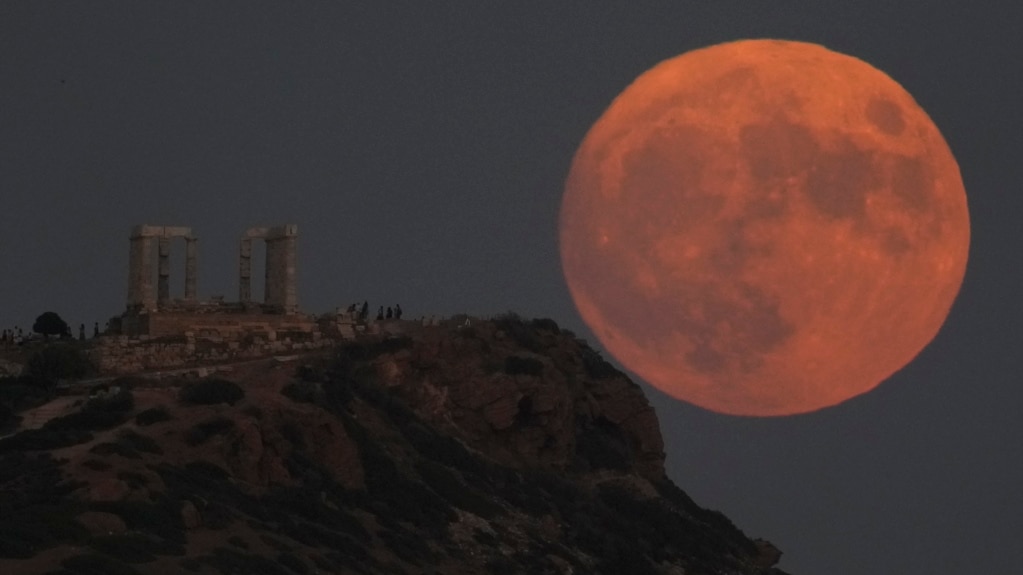Sky watchers around the world were treated this month to two full moons, a supermoon and a blue moon.
The American space agency NASA explains a supermoon happens when the moon’s orbit brings it closer than usual to Earth at the same time that the moon appears full from Earth. The first supermoon of 2023 was in July. The fourth and last one will be in September.
The last time two supermoons appeared in the sky in the same month was in 2018, The Associated Press reports. The next time a blue supermoon is set to arrive is 2037.
The first supermoon arrived on the first day of August, while the blue moon was seen beginning August 30. NASA noted that when the blue moon arrived, the planet Saturn was just a few days from its closest and brightest appearance of the year from Earth. Saturn appeared as a bright “star” to the upper right of the blue moon.
Italian astronomer Gianluca Masi, creator of the Virtual Telescope Project, held an online watch event as the blue supermoon was setting below the skyline of Rome. But he advised that, as long as the weather was good, world observers looking to the sky would not need any special equipment to see the moons.
“Warm summer nights are the ideal time to watch the full moon rise in the eastern sky within minutes of sunset,” said retired NASA astrophysicist and moon expert Fred Espenak.
Full moons happen at the exact moment when the moon is opposite the sun, NASA says. Astronomers say a supermoon can appear about 14 percent larger and a bit brighter than other moons.
The Old Farmer’s Almanac notes that the August full moon is known as the sturgeon moon. This is because of a traditionally large increase in fish in the American Great Lakes area during the month of August.
Although it is called a blue moon, it does not appear blue in color. Instead, the name means it is the second full moon to happen within one month or the fourth to take place in a season.
NASA says the moon takes 27.3 days to orbit Earth, but it takes 29.5 days to complete a full moon cycle. This is what makes it possible to see one full moon at the start of the month and another one right at the end.
Astronomers say, however, that the moon can look blue under the right conditions. For example, this can happen as a result of smoke or dust particles in the atmosphere.
While the blue supermoon brings the possibility for watching and taking beautiful pictures, its stronger gravitational pull also can influence higher tides. Weather experts advise people living in areas near shorelines to be aware of this, especially during storm activity.
There are other kinds of moons that appear at different times.
NASA says a blood moon happens during a total lunar eclipse. This event is when Earth lines up between the moon and the sun, hiding the moon from sunlight. In addition, the term blood moon can also be used to describe a moon that appears reddish because of dust, smoke or haze particles in the sky.
A harvest moon is a full, bright moon that appears “closest to the start of autumn,” NASA explains. This name dates from the time before electricity, when farmers depended on the moon's light to harvest their crops late into the night. The moon's light was especially important during fall when harvests are the largest.
I’m Bryan Lynn.

